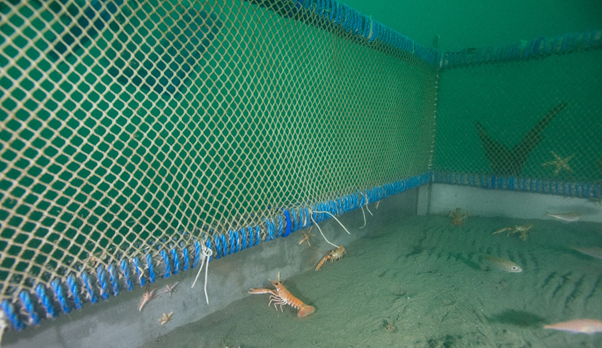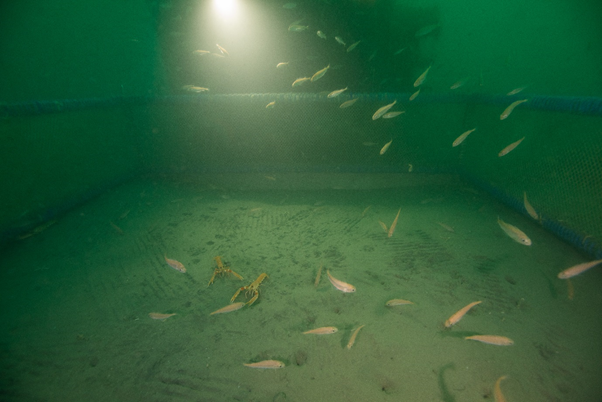For a year ICM researchers will monitor the behaviour of the Norway lobster through an EMSO underwater observatory located 20 meters deep in the Irish Bay of Galway.

Norway lobster (Nephrops norvegicus) is a slim, orange-pink lobster of high commercial value. Fishing practices such as trawling are one of the greatest threats to the species since destroy the galleries that these decapods dig into soft bottoms to take refuge.
Norway lobsters stay in this kind of tunnels during the day and come out at night to look for food, so studying the behaviour and estimating the stock of the species is not that easy. This requires comprehensive monitoring programs such as the ‘Smart Lobster’ project, in which participate researchers from the Institut de Ciències del Mar (ICM) in Barcelona and the Marine Institute (MI) in Galway (Ireland).
The program, funded by the European Marine Infrastructure EMSO (European Multidisciplinary Seafloor and water column Observatory), has just been launched and its main objective is to monitor the behaviour of Norway lobster by filming its movements and activity.
To do this, the researchers will use an underwater observatory located 20 meters deep off the coast of Spiddal -a small town in Galway Bay- which is one of the largest fishing grounds for this species in the Northeast Atlantic.

From this observatory, named ‘SmartBay’, video footage of the Norway lobster will be continuously collected, which will allow the experts to study how these crustaceans excavate the galleries in which they take refuge.
Likewise, the experts, among which we can find the ICM researchers Jacopo Aguzzi, Joan Company and Joan Navarro, who belong to the Functioning and Vulnerability of Marine Ecosystems Group, will analyse the role of ecological and environmental factors that modulate the excavation of these galleries, as they are the socially aggressive territorial interactions and the presence of dams or predators.
The results of the study will have implications for the stock assessment of this species, since according to Jacopo Aguzzi, “all these factors create indeterminacy in the evaluations that are made through trawling campaigns since the animals are captured only when they are outside the galleries".
Within the framework of the ‘Smart Lobster’ project, the researchers at ICM and MI submerged a steel frame on May 27 to monitor the behaviour of 15 individuals over the next 12 months, which will allow them to standardize the demographic data of the species obtained with trawl nets and towed sledges.
"Coastal infrastructures such as the EMSO SmartBay observatory give us an excellent opportunity for the development of pilot studies such as this, which should serve to advance technologically in the most classic stock assessment approaches, providing new ecological data in a multidisciplinary and highly integrated manner," explains Aguzzi.
In this regard, Alan Berry, the SmartBay director, states that observatories like the one located in Galway Bay “facilitate scientific research and the production of new knowledge to improve the management of the marine ecosystem”. In Spain, for example, there is the OBSEA, an underwater observatory located close to the coastal town of Vilanova i la Geltrú that is also part of the EMSO.
EMSO is a European organism that distributes marine scientific data, comprising 11 oceanographic observatories located in strategic places that go from the North Atlantic to the Black Sea. The Director-General of EMSO, Juanjo Dañobeitia, from the UTM-CSIC, indicates that "the main objective of this infrastructure is to provide an integrated view on environmental properties and processes related to the interactions between the geosphere, the biosphere, and the hydrosphere".
